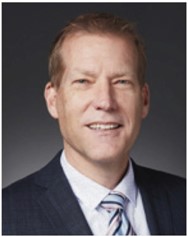Perspectives: Driving Discomfort

Diego Ph // Unsplash.com
Try this exercise: Look at your role now as if you are in your first 90 days on the job.
During my formative years, my father was pastor of a church where the average tenure for significant employees was five to seven years. Sometimes, those employees’ departures affected me personally— such as when the youth pastor, from whom I learned so much, moved on. But each time a new pastor would come in with a passion and enthusiasm, bringing new energy to the entire church.
 Of course, this job pattern doesn’t just happen in churches, and it is not always every five to seven years. These days, I tend to see a three-to-five-year trend where people move on to their next opportunity, either within the company or with a new company. Executives tend to stay longer when there is a fit, although in my experience, most top executives stick around somewhere between five and 10 years and depart because they realize they need to move on, or the organization recognizes it.
Of course, this job pattern doesn’t just happen in churches, and it is not always every five to seven years. These days, I tend to see a three-to-five-year trend where people move on to their next opportunity, either within the company or with a new company. Executives tend to stay longer when there is a fit, although in my experience, most top executives stick around somewhere between five and 10 years and depart because they realize they need to move on, or the organization recognizes it.
Similarly, strategic plans used to look ahead five years or more before the speed of business accelerated to the point where even a three-year strategic plan is often out of date within the first year. The COVID-19 pandemic forced every business to drop all plans and come up with new ones in early 2020. What occurred in that time frame was heartbreaking, as so many businesses had to focus all their efforts on saving their core business and providing for employees. At the same time, it forced a very tough look at how our businesses were operating and pressed us all to make really tough decisions.
In hindsight, it should not have taken a crisis to make some of those decisions. I take pride in constantly questioning how things are done in order to improve the business. Yet, when I was forced to make some of my toughest decisions due to COVID, I realized that I should have made some of those much earlier.
Most leaders deal with this dilemma: We get to know and care about our colleagues or clients and the familiarity can lead to complacency. Leaders who aren't complacent are often considered uncaring, depending on their approach to implementing tough decisions. But it's possible to do both, and doing both is better for the organization.
Having a new leader join the organization every several years creates an opportunity to look at things differently. A new leader brings valuable experiences and insights as well as the desire to contribute in a meaningful way without the “baggage” that a long-time leader accrues. While a new leader brings a fresh perspective, be aware of that baggage; ignoring it can lead to bad decisions.
New leaders usually bring a new level of energy and motivation to the team during the time of change, and that transition is often uncomfortable. If you are a leader in an organization, be the one who forces that uncomfortable change every few years rather than waiting for an outside leader to bring change.
If your organization needs to bring in an outside leader to help it refresh, look for someone on the outside who is in a high enough position to make a substantial difference and support the changes brought on by that person, even if it makes you uncomfortable.
The biggest challenge for insiders who want to force change is that our most recent experience is what has brought our organization to its current state. Reading books that challenge our thinking help, especially if those books share actionable insights relevant to businesses of similar size. Attending conferences and creating connections with peers who provide helpful insights is critically valuable as well. Moving responsibilities around in your organization can also lead to the changes needed, especially because it helps people see the same problem from a new perspective.
However we do it, we must refresh our businesses every few years to bring meaningful value to our customers. A lack of change will lead to bigger problems in the future. Some of the changes may be uncomfortable, but good leaders manage this discomfort with compassion and clarity, which leads to longer-lasting success.
Drive discomfort in your organization toward the goal of giving your colleagues a better place to work and providing the most value to your customers and shareholders.
––––––––––––––––––––––––––––––––––––––––––––––––––––––––––––––––––––––––––
Dale Denham is president and CEO of PPAI.

